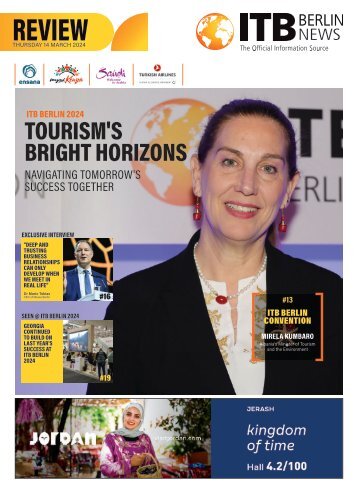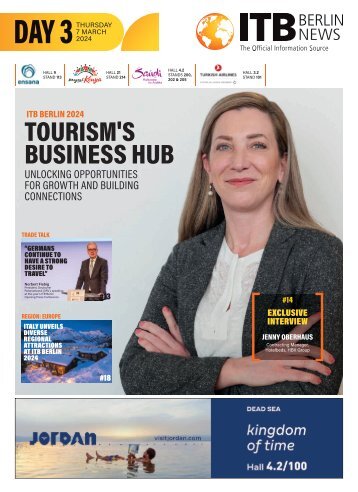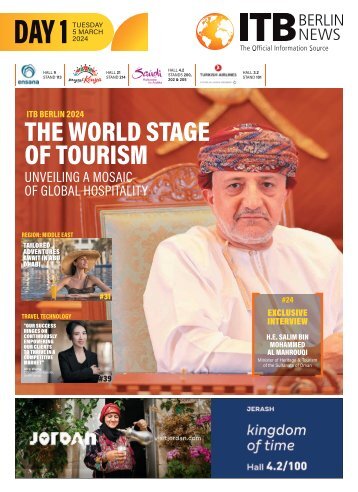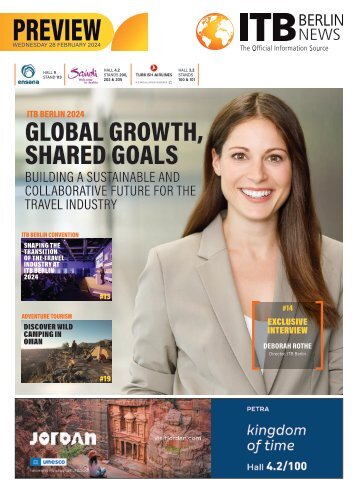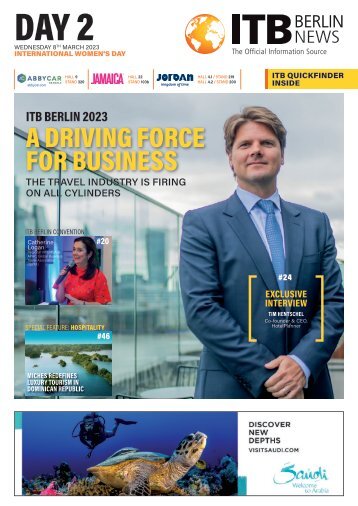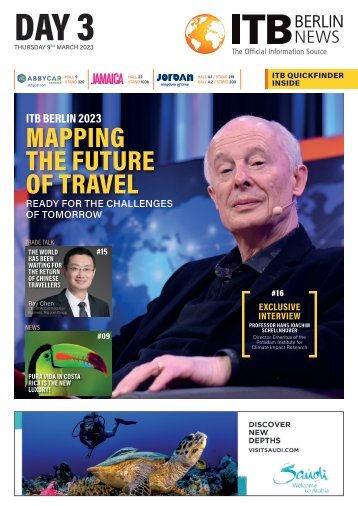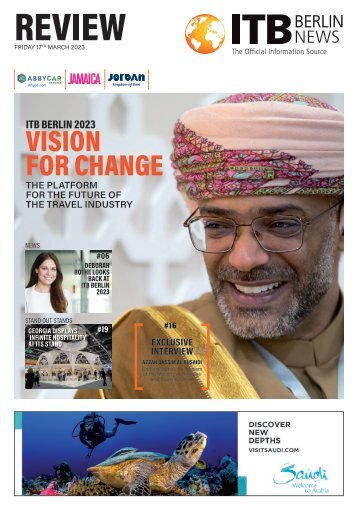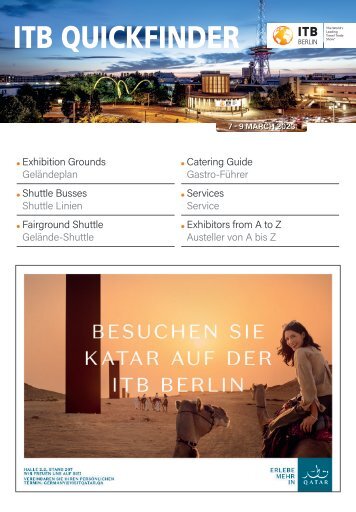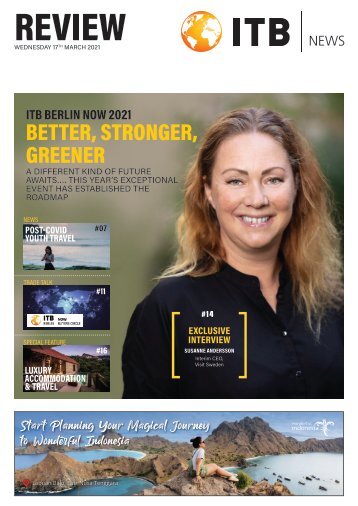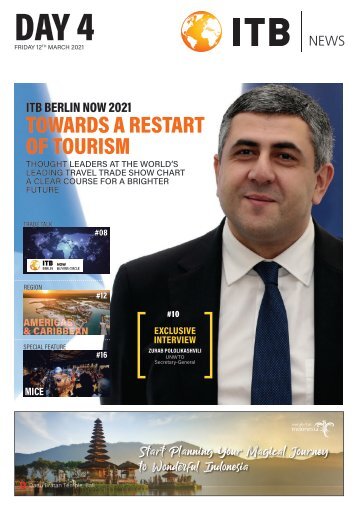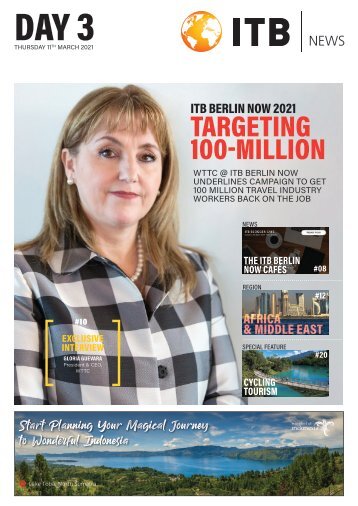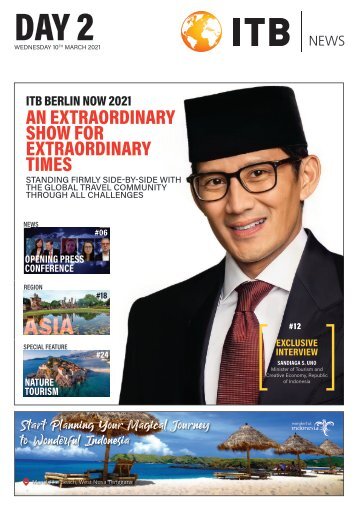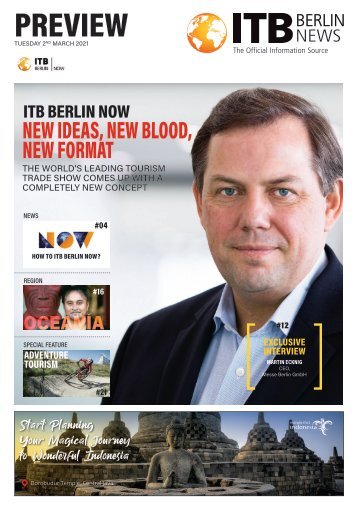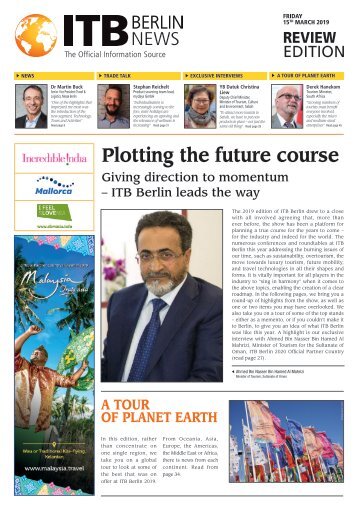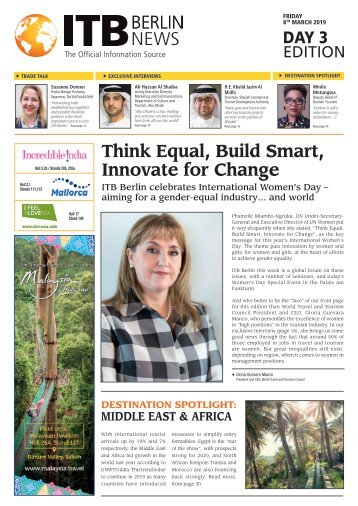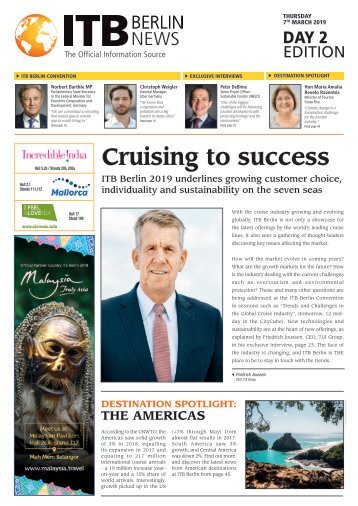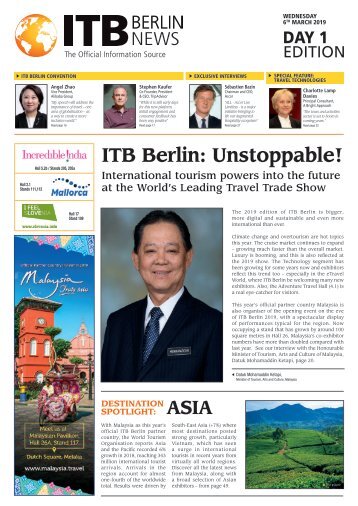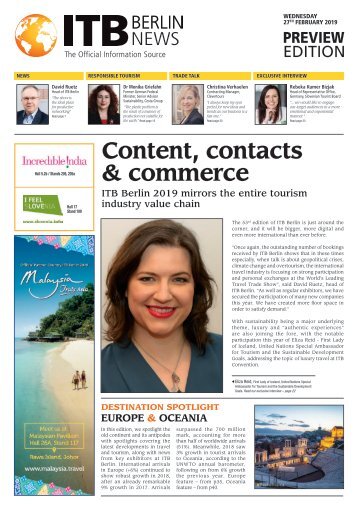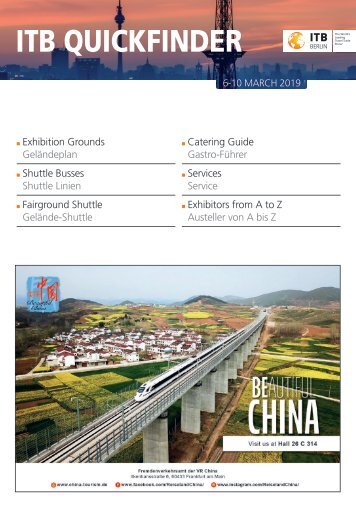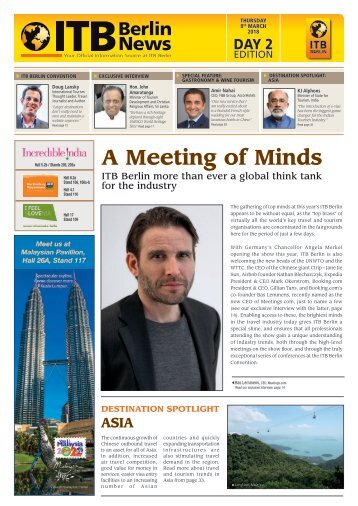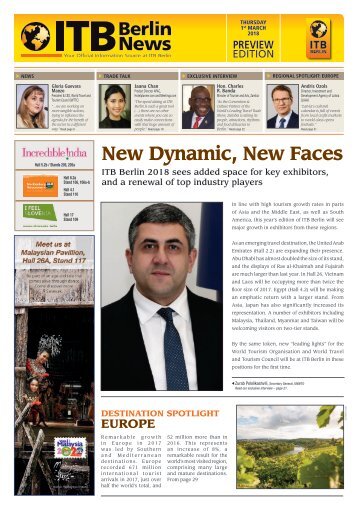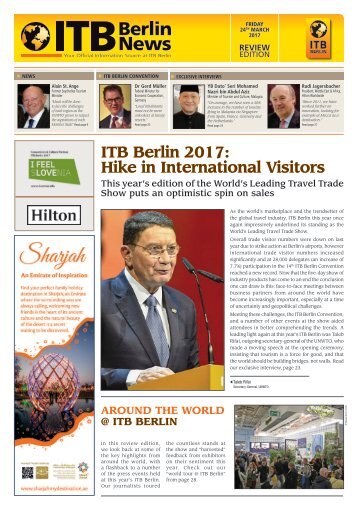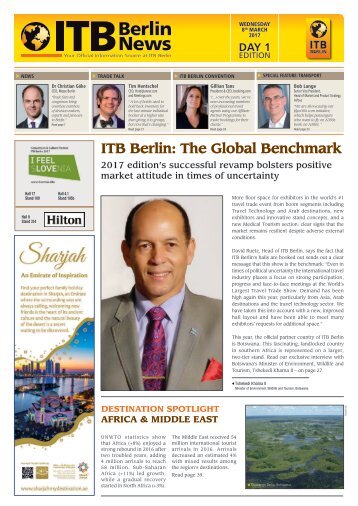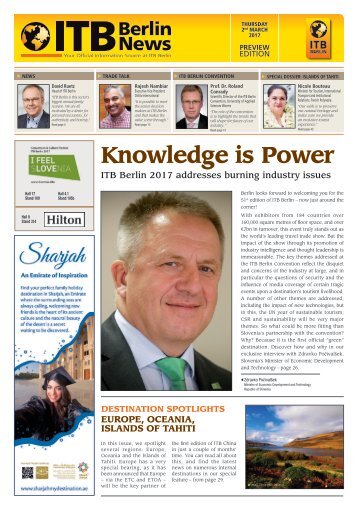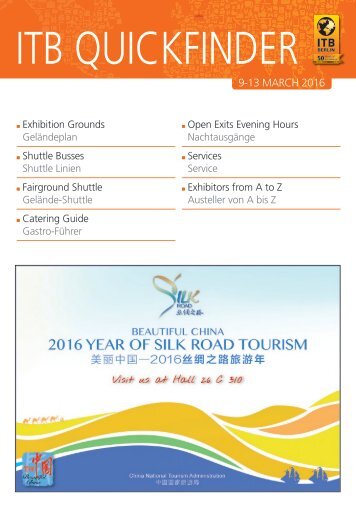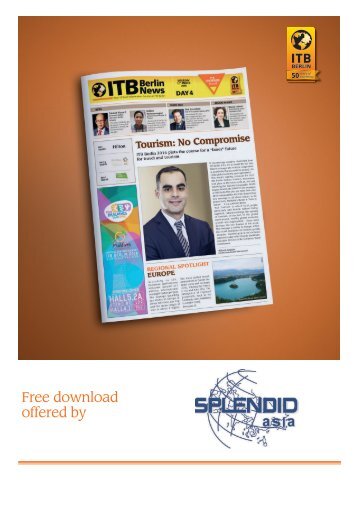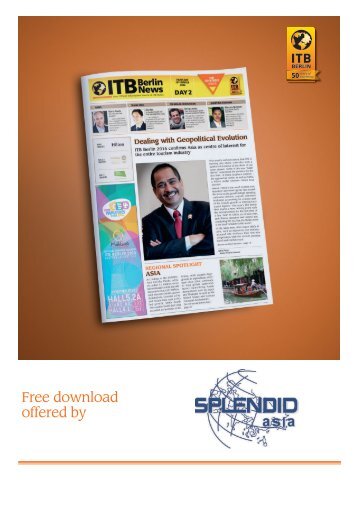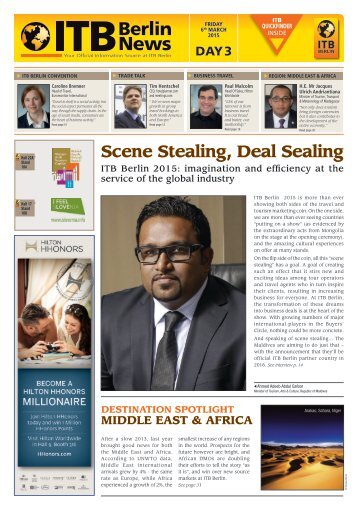
ITB Berlin News - Day 2
- Text
- Berlin
- Tourism
- Destination
- Markets
- Countries
- Mongolia
- Western
- Hotels
- Indonesia
- Destinations
- Www.cleverdis.com
20 REGION ASIA Indonesia
20 REGION ASIA Indonesia – Tourism Up 9% in 2013 Receipts rise by 10% to hit record US billion Hall 26 A Stand 120 Hall 26 A Stand 235 At ITB Berlin, Indonesia is promoting ‘special interest’ tourism products ranging from ecotourism, heritage, sports, cruise, MICE, wellness, culinary and shopping. Last year Indonesia welcomed an all-time high of 8.8 million visitors, up by 9% over 2012-- four percentage points higher than the benchmark of world tourism growth. Tourism receipts rose by 10% to hit a record of US billion. In addition, the WEF-Travel and Tourism Competitiveness Report 2013 considered Indonesia to be the 70th most competitive tourism in the world out of 139 countries – up from 74th in 2011. Based on the Passenger Exit Survey (PES) of 2012, visitors from Europe enjoy nature in Indonesia, especially the beaches, leisure, culture and heritage. This supports the themes Indonesia are promoting at ITB Berlin and in Europe which are ‘special interest’ tourism products ranging from ecotourism, heritage, sports, cruise, MICE, wellness to culinary and shopping. The Indonesian Ministry of Tourism and Creative Economy has identified five target countries in Europe (UK, France, The Netherlands, Germany and Russia) which contributed 10% to all visitor arrivals to Indonesia in 2013. The European feeder nation showing the fastest growth was France. Secondary destinations are a key part of the Indonesia tourism theme “Bali and Beyond” which has become an integral part of the Ministry’s Grand Strategy of “16 Target Markets; 7 Primary Products; 16 Priority Destinations.” The 16 target markets include countries in all continents but Africa. The 7 primary products target culture & heritage, nature & ecotourism, sports & recreation, cruise, culinary and shopping, health & wellness, and spa. The 16 priority destinations are Lake Toba, Pulau Seribu, Jakarta Old City, “Borobudur”, Mount Bromo- Tengger-Semeru cluster, Kintamani-Batur Lake, Menjangan-Pemuteran cluster, Kuta-Sanur- Nusa Dua, Mount Rinjani, Komodo Island, Ende- Kelimutu, Tanjung Puting, Toraja, Bunaken, Wakatobi, and Raja Ampat. Indonesia would particularly like to recommend Komodo Island, Toraja, Bunaken, Wakatobi and Raja Ampat to Europeans.. ITB BERLIN NEWS • Thursday 6 th March 2014 www.itb-berlin-news.com
ASIA REGION 21 Riding the Asian Hotel Market Wave Best Western Asia continues brazing trail to major expansion Best Western is entering an unprecedented era of expansion in Asia and the Middle East, with a record number of hotel openings and debut properties in many emerging markets. In just the past two years BWA has opened its first hotels in key cities like Kuala Lumpur (BEST WESTERN PREMIER Dua Sentral) and Yangon (BEST WESTERN Green Hill Hotel), up-and-coming resorts like Nha Trang (BEST WESTERN PREMIER Havana Nha Trang) and emerging destinations including Semarang (BEST WESTERN Star Hotel) and Cebu City (BEST WESTERN PLUS Lex Cebu). Glenn de Souza – VP for International Operations - Best Western Asia explains that his regional portfolio has now grown to 200 hotels, but he plans to expand to 300 in the coming years. “Leading this development will be Indonesia, where our portfolio will surge from 11 to more than 30 hotels, the Philippines which will almost double from seven to 13 properties, and Malaysia which will almost triple from five to 13 hotels in the coming years.” “We will also plant Best Western’s first flag in Sri Lanka and expand into emerging markets like Laos and Bangladesh,” continues de Souza. “And with our new multi-tier brand strategy, offering midscale, upscale and luxury hotels, Best Western has a hotel to suit every market, from international gateway cities to provincial tourism towns, beach resort and business hubs. In short, Best Western will be delivering a range of modern hotels suited to their destination, all across Asia’s emerging economies.” Meanwhile 2013 also saw the opening of Best Western’s first property in Myanmar, the BEST WESTERN Green Hill The Grand At Nay Pyi Taw, Myanmar Hotel in Yangon. “This one of the world’s most exciting emerging markets, both for trade and tourism,” insists de Souza. “With visitor arrivals expected to increase exponentially … WITH OUR NEW MULTI-TIER BRAND STRATEGY, OFFERING MIDSCALE, UPSCALE AND LUXURY HOTELS, BEST WESTERN HAS A HOTEL TO SUIT EVERY MARKET over the coming 5-10 years, and a severe shortage of internationally branded accommodation, Best Western has identified Myanmar as a key growth area for all of its brands. 2014 will see further expansion with the opening of the BEST WESTERN PREMIER The Grand AT Nay Pyi Taw in the country’s capital.” Hall 2.1 Stand 455 Li Yaying Director, FVA Destination China Easier Than Ever Facilitation of visa policy set to foster growth in inbounds While many look at China as a growing source market for tourism, FVA, China’s Tourism Board in Germany plans to leverage ITB Berlin to promote and foster renewed growth in inbound tourism. According to FVA Director Li Yaying, her government is expecting a 2% to 3% increase in inbound travel to China, mainly due to the improvement of the economic situations of the major tourist-generating markets to China. Another factor which is set to grow tourism is the expansion of the 72-hour visa-free transit – now available in seven cities – Beijing, Shanghai, Guangzhou, Chengdu, Chongqing, Dalian and Shenyang. “This is very helpful for the promotion of tourism to the international markets,” Ms Li told ITB Berlin News. “It applies not only to business travel, but also for leisure travel, meaning tourists can now combine a visit to China with their trips to other parts of Asia, or when going to Australia or New Zealand.” Both group travel and individual tourists are important for FVA. A new trend is emerging wherein apart from the traditional group travel, the size of groups is tending to become smaller. In the past, groups of up to 40 people were common. Now, according to Ms Li, it’s more usual to see groups of 10 to 15 people. “The groups are more and more customized and increasingly tailor-made”, she added. “We can also see an increase in individual travellers, especially with the information revolution. People are able to find all kinds of information much more easily and it’s more and more convenient for them to make bookings online or to organise or plan individual travel so as to meet more diversified and personalised needs and demands.” Hall 26 C Stand 338 ITB BERLIN NEWS • Thursday 6 th March 2014
- Page 1: THURSDAY 6 th MARCH 2014 DAY 2 EXCL
- Page 5 and 6: NEWS 5 Tourism Continues Upward Pat
- Page 9 and 10: ITB BERLIN CONVENTION 9 No More Que
- Page 11: ITB BERLIN CONVENTION 11 The Holist
- Page 14 and 15: 14 EXCLUSIVE INTERVIEW Clear Sailin
- Page 17: ASIA REGION 17 TRAVEL TRENDS IPK Re
- Page 22 and 23: 22 REGION ASIA Packing More Holiday
- Page 24 and 25: 24 REGION ASIA H.E. Oyungerel Tsede
- Page 26: 26 WHERE TO GOIN BERLIN Hospitality
Inappropriate
Loading...
Mail this publication
Loading...
Embed
Loading...
